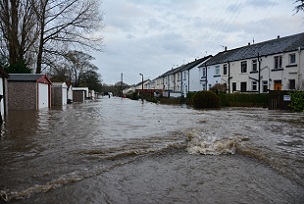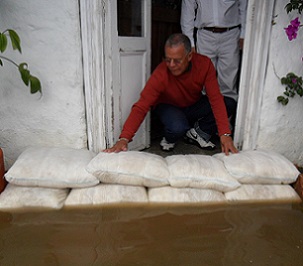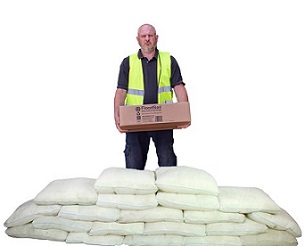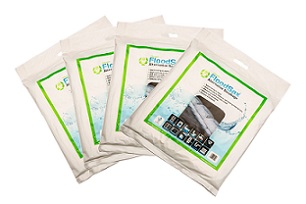 The UK is struggling to cope with a barrage of gales leading to continual flooding
The UK is struggling to cope with a barrage of gales leading to continual flooding
 A wall of FloodSax alternative sandbags keeping filthy floodwater out of a home
A wall of FloodSax alternative sandbags keeping filthy floodwater out of a home
 All these 20 FloodSax came from this one box
All these 20 FloodSax came from this one box
 FloodSax are vacuum-packed making them spacing-saving to store
FloodSax are vacuum-packed making them spacing-saving to store
If you’re fed up of rain and gales don’t read what the weather is going to be like for the next month
The weather has been terrible since mid-January … and the bad news is it’s not going to improve much in March.
The Met Office has released its long-range forecast with the north set to suffer more heavy rain and gale force winds for at least the next month.
Over the weekend some roads have been turned into rivers with drains and gullies unable to cope with the torrential rain and this week rain and wind will continue until Thursday when it turns colder but that will mean wintry showers in the north.
From February 25 to March 6 the Met Office states: “The north is likely to see the wettest and coldest conditions with spells of rain and hill snow interspersed with periods of sunshine and showers. The south will generally be less windy and more settled, but there is still likely to be some rain at times.
“Winds are also likely to be strong throughout the period with gales or severe gales possible almost anywhere, but especially in the north.”
It won’t improve much between March 6 and March 21 as the Met Office warns: “The weather in the first half of March is likely to be a continuation of changeable conditions with a north-south split, especially in precipitation. Winds are likely to remain strong across the north.”
Perhaps there’s a tiny bit of good news as the Met Office adds: “Temperatures are likely to be overall mild, with the northwest slightly closer to average.”
The continual rain means flooding is likely to be widespread as the rain is falling on already saturated ground so is more likely to flow down roads and driveways into homes and businesses.
Many people don’t realise that local councils have no responsibility to provide sandbags so people have to organise their own flood protection.
The Environment Agency states: “Don’t assume the authorities will provide you with sandbags in a flood emergency. It is the responsibility of property owners to take appropriate action to protect their property from flooding. Sandbags are relatively ineffective when compared to purpose-built flood protection products. We strongly encourage people to use these products.”
Some councils now realise that FloodSax are so versatile - space-saving to store and quick and easy to deploy - that they recommend them.
Gosport Borough Council in Hampshire urges its residents to use FloodSax, saying it has evaluated the bags. The council adds: “FloodSax have many advantages over traditional sandbags, being easy to store and move, easy to use and, importantly, easy on the environment, having a significantly lower carbon footprint.”
FloodSax are vacuum-packed in packs of five in easy to carry bags and four packs fit into one cardboard box weighing just 21lbs (9.5kilos)– that’s the equivalent to 20 traditional sandbags and imagine trying to lift and shift them to both store and then putting them in place when a flood is about to happen.
To deploy FloodSax as alternative sandbags when a flood is forecast or is actually happening, simply immerse the FloodSax in 20 litres of water in a large bucket or tub. You could even use a hosepipe or, if time is really critical, use the floodwater itself.
The FloodSax will then expand in around 8 minutes to weigh 20kg (44lbs). A special gelling polymer inside simply absorbs the water and then keeps it in the FloodSax so it can be used for however long the emergency lasts, which could be several months.
Each row of FloodSax will keep out approximately 7 inches of water and usually two or three rows are enough to keep floodwater out.
To find out how to get hold of FloodSax go to http://www.floodsax.co.uk/buy/uk-suppliers/